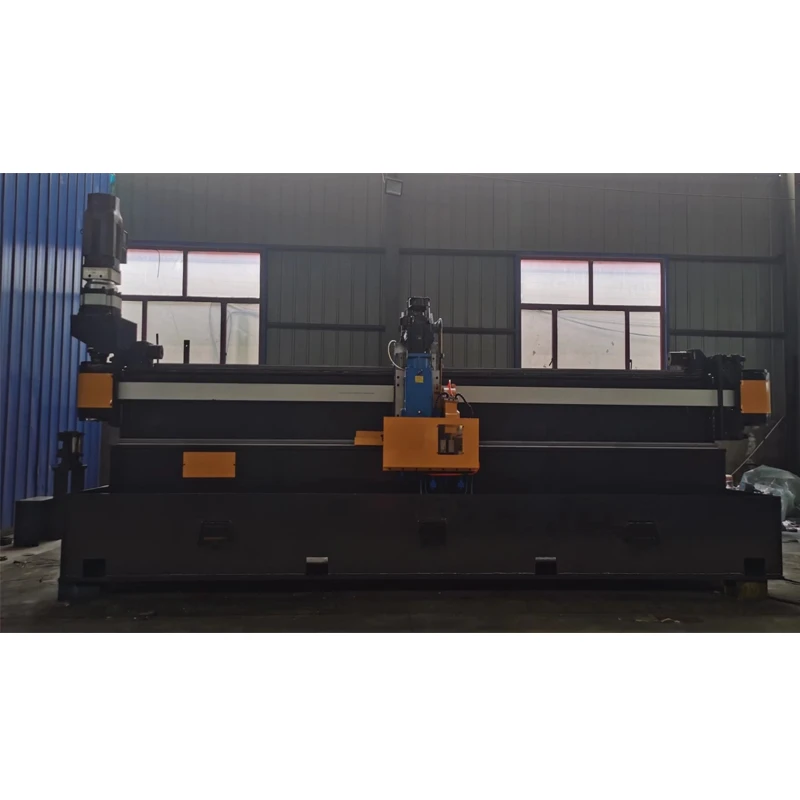Advanced Techniques in Pipe Roll Forming for Improved Structural Applications
Understanding Pipe Roll Forming A Comprehensive Overview
Pipe roll forming is a widely utilized manufacturing process aimed at shaping metal sheets into specific configurations, often to produce pipes and tubes. This process is characterized by its efficiency and precision, making it a favored choice in a range of industries, including construction, automotive, and manufacturing. In this article, we will delve into the fundamentals of pipe roll forming, its advantages, applications, and the key considerations that guide the process.
What is Pipe Roll Forming?
At its core, pipe roll forming involves feeding a flat metal strip through a series of rollers that gradually bend it into the desired shape. Each roller is strategically positioned to progressively shape the metal, ultimately forming a continuous pipe. The process can be tailored to create various profiles, including round, square, and rectangular sections, depending on the requirements of the application.
The pipe roll forming process can be divided into several key stages coil preparation, feeding, forming, welding (if necessary), and cutting. Initially, metal coils are prepared and fed into the roll forming machine. As the metal passes through the rollers, it is subjected to a series of bends and deformations that result in the formation of a pipe. In certain applications, the edges of the formed pipe may be welded together to ensure structural integrity.
Advantages of Pipe Roll Forming
One of the primary benefits of pipe roll forming is its ability to produce high volumes of consistent and uniform products. The automation involved in the process minimizes human error, leading to increased precision and quality. Additionally, the continuous nature of roll forming allows for significant savings in production time and costs, making it a financially viable option for manufacturers.
Another advantage is the versatility of the process. Pipe roll forming can accommodate a range of materials, including stainless steel, carbon steel, and aluminum. This versatility allows manufacturers to cater to various industries and meet diverse customer specifications.
Furthermore, the process generates minimal waste since the metal is continuously shaped without the need for extensive cutting or machining. This reduction in waste not only benefits manufacturers from an economic standpoint but also supports more sustainable manufacturing practices.
pipe roll forming

Applications of Pipe Roll Forming
The applications of pipe roll forming are extensive and varied. In the construction industry, rolled pipes are commonly used for structural support, fencing, and in the framework of buildings. In the automotive sector, manufacturers use roll-formed tubes for exhaust systems, chassis components, and safety structures.
Moreover, pipe roll forming is essential in the production of heat exchangers, HVAC systems, and various piping applications in energy production and distribution. The versatility of the formed products allows them to be employed in both residential and commercial settings, catering to a vast market.
Considerations for Effective Pipe Roll Forming
While pipe roll forming offers numerous advantages, there are critical considerations to ensure the effectiveness of the process. One major factor is the selection of raw materials. The choice of the appropriate metal and thickness can significantly impact the final product's quality and performance.
Moreover, the design of the roll forming machine plays a crucial role in determining the capabilities of the process. Factors such as roller alignment, tooling design, and machine speed must be optimized to achieve the desired quality and efficiency.
Additionally, proper maintenance of the machinery is essential to minimize downtime and ensure consistent output. Regular inspections and adjustments can prevent potential issues that may arise during production, thereby enhancing the overall reliability of the operation.
Conclusion
In summary, pipe roll forming is an efficient and versatile manufacturing process that is integral to various industries. Its ability to produce high-quality, uniform products while minimizing waste makes it a practical solution for modern manufacturing challenges. By understanding the process and its applications, manufacturers can leverage pipe roll forming to meet the demands of today's marketplace, ensuring both efficiency and sustainability in their operations.
-
High Frequency Straight Seam Welded Pipe Production Line-BzZhou Xinghua Machinery Equipment Manufacturing Co., LTD.|Precision Welding, High EfficiencyNewsJul.30,2025
-
High Frequency Straight Seam Welded Pipe Production Line|BzZhou Xinghua|Precision Welding&EfficiencyNewsJul.30,2025
-
High Frequency Straight Seam Welded Pipe Production Line - BzZhou Xinghua|Precision Engineering&EfficiencyNewsJul.30,2025
-
High-Frequency Straight Seam Welded Pipe Production Line-BzZhou Xinghua Machinery Equipment Manufacturing Co., LTD.NewsJul.30,2025
-
High-Frequency Straight Seam Welded Pipe Production Line-BzZhou Xinghua Machinery Equipment Manufacturing Co., LTD.|Precision Manufacturing, High EfficiencyNewsJul.30,2025
-
High Frequency Straight Seam Welded Pipe Production Line-BzZhou Xinghua Machinery Equipment Manufacturing Co., LTD.|Precision Steel Pipe Manufacturing&Industrial EfficiencyNewsJul.29,2025


